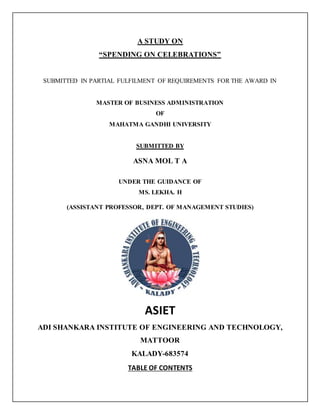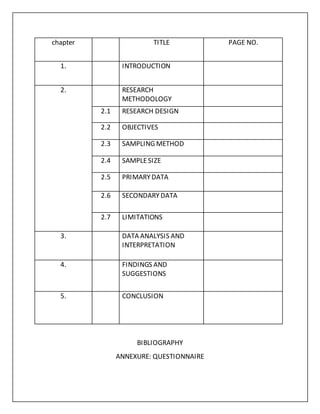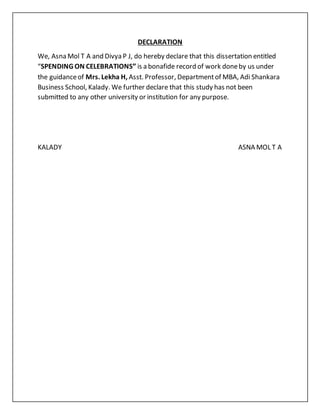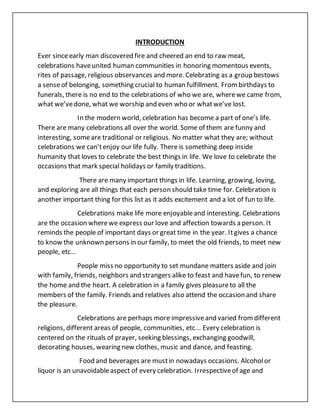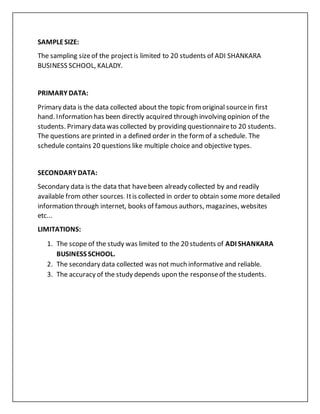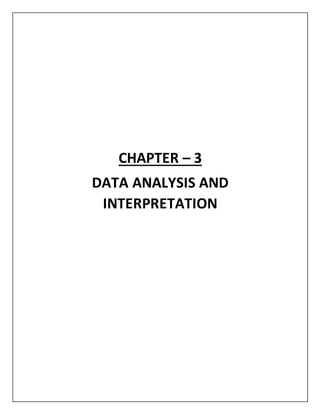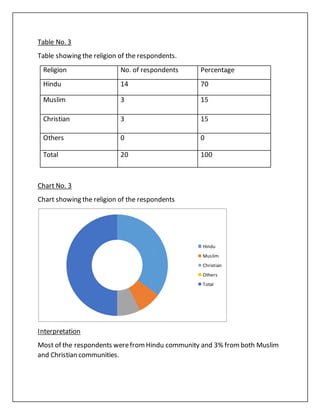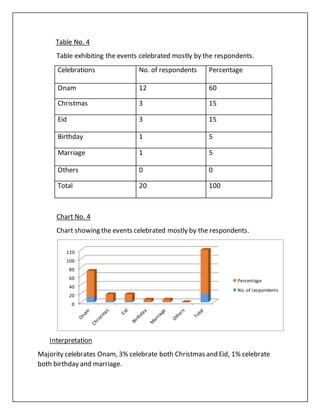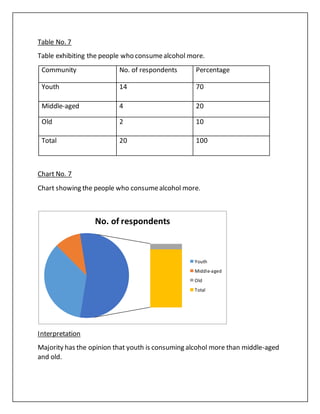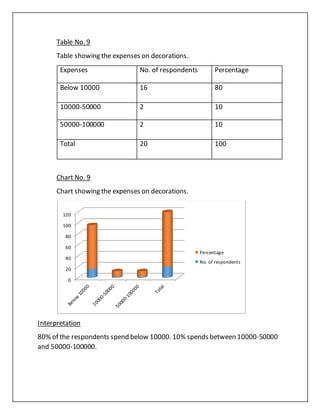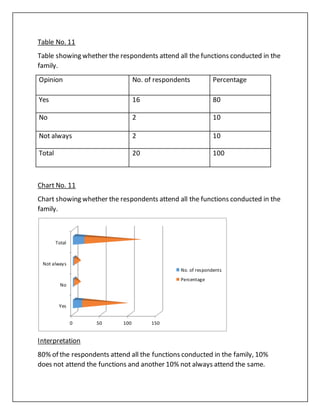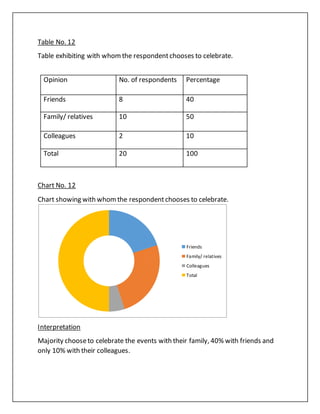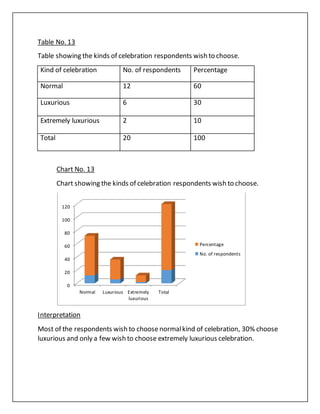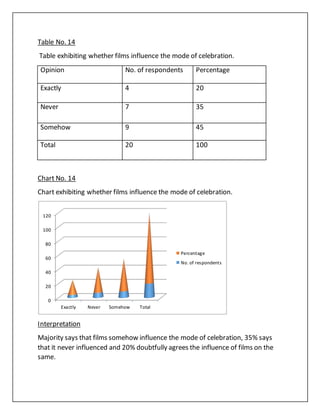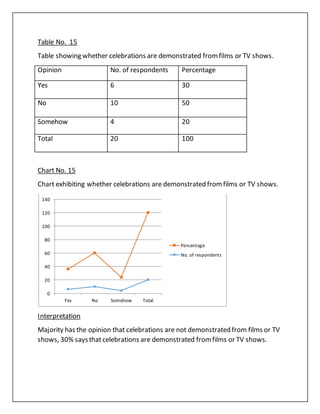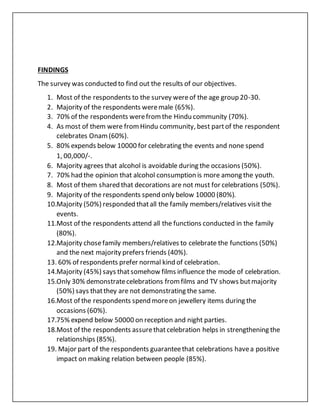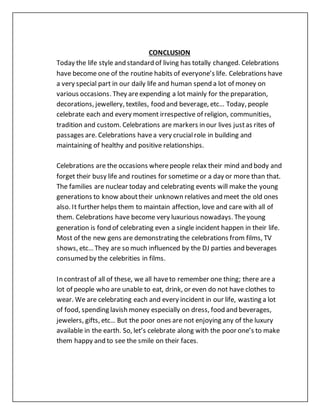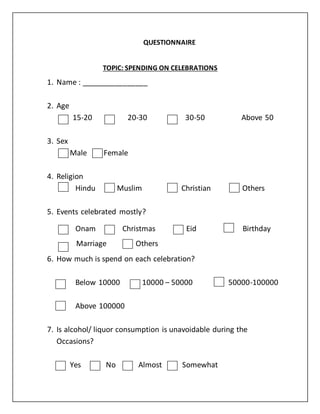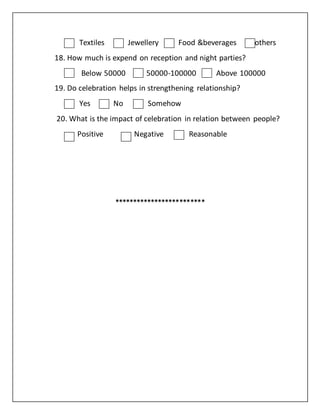The document discusses a study on spending on celebrations. It provides details on the research methodology used in the study. The study used a descriptive research design and collected both primary and secondary data. The primary data was collected through questionnaires from 20 students. Most of the respondents were male, Hindu, and between 20-30 years of age. The study found that most money is spent on celebrations like Onam and below Rs. 10,000 per celebration. It was found that youth consume more alcohol during celebrations compared to middle-aged and old people. Decorations were not considered necessary by most respondents and expenses on decorations were mostly below Rs. 10,000. Family relationships were strengthened through joint celebrations according to the study.
